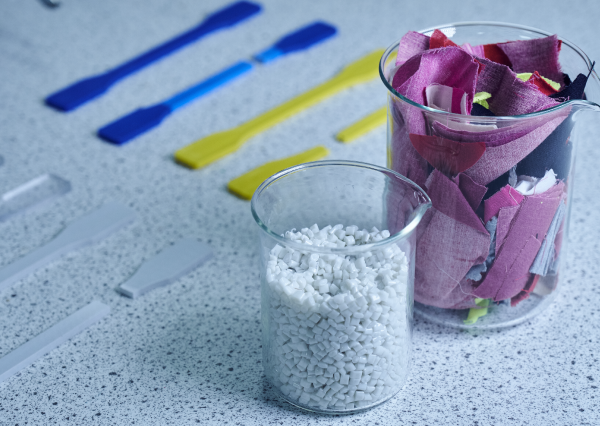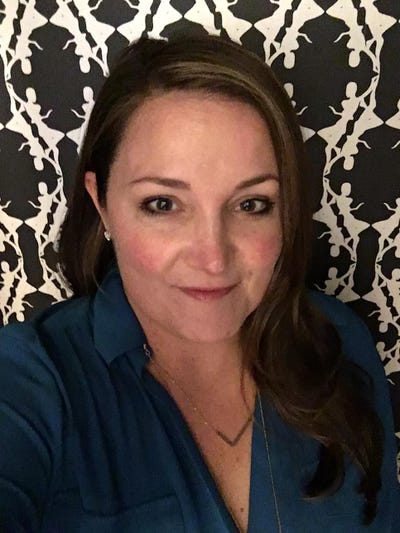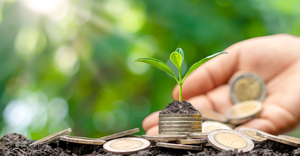Worn Again Technologies Aims to Eradicate Textile Waste and Shift to a Circular Economy

Worn Again Technologies’ unique technology has the ability to replace the use of virgin resources by recapturing raw materials from non-reusable products. The company recently secured up to €8 million in new equity capital from investors, including follow-on commitments from two of its existing strategic investors, H&M Group and Sulzer.
Waste360 wanted to learn more about the transformative technology and process, its overall impact and the company’s growth plans. Here is a look into the discussion.
Waste360: Could you please explain your technology and its benefits?
Worn Again’s technology is a regenerative recycling process which is able to separate, decontaminate and extract polyester and cellulose (from cotton) from non-reusable textiles, polyester bottles and plastic packaging to produce dual outputs of PET pellets and cellulose pulp.
We are focussed on solving the challenging issue of converting polyester and polycotton blended textiles, and PET plastic, at their end-of-use, back into circular raw materials.
By keeping the world’s resources in constant circulation, we can drive economic, social and environmental benefits, enable circularity and contribute to eliminating textile and plastic waste.
As our polymer recycling technology can deal with both pure and blends of polycotton/cellulose, this increases the proportion of suitable non-reusable textile for our process and it contributes in offering a valid solution to increase the current 1% of textile recycled today.
The key principles of our process are to ensure that our outputs are cost competitive, comparable in quality to virgin materials, and that they have a significantly reduced environmental impact compared to conventional production.

Waste360: What have you accomplished so far?
Worn Again Technologies was founded in 2005 with a determination to make a difference and to create a business out of solving the challenge of textiles waste. Starting in upcycling we evolved in 2012 to our current technology phase which required lots of time and efforts along the 8 years of development.
In 2013 our founder members H&M and Kering joined the forces and later in 2017 strategic investors including H&M Group, Sulzer Chemtech (one of the world’s largest chemical engineering companies), Mexico-based Himes Corporation (a garment manufacturer) and Directex (a textiles producer), came on board and we took part of the Fashion for Good scaling programme.
In 2018, we were awarded a grant to become the first chemical recycling technology to have Cradle to Cradle (C2C) certified outputs and influential brands and partners, such as Kering, ASICS Europe, Sympatex, Dibella and Dhana joined Worn Again’s Pioneer Member Programme.
In 2019, we received the ANDAM Innovation Prize, the PCIAW Outstanding Contribution to the Textile Industry, the ‘One to Watch’ at the Global Good Awards and the company’s Founder, Cyndi Rhoades, was a finalist for The Circular Economy Awards Leadership award, as well as the support of influential brands and partners, such as Kering, ASICS Europe, Sympatex, Dibella and Dhana.
In January 2020 we launched our pilot R&D facility in Redcar, UK as a major step forward in the development process and just now in June 2020, we secured €8 million investment from strategic partners.
While we finalise our fundamental technology development through the R&D phase, we are entering in the next phase of bringing the technology to market. Our next milestone will be to build a demonstration plant in Europe.
Waste360: This financing will help through the R&D phase, you said. What specifically do you hope to determine? And how will this financing enable your firm to grow?
The next phase will include the development and construction of a demonstration plant. Our ambition is to scale and license our technology to global plant operators as quickly as possible with the help of strategic partners and an expert team, accelerating us all towards a circular world.
We are currently working towards the next milestone in our plan by engaging potential stakeholders who are interested in building this demonstration plant with us. We aim to agree on these plans later this year and expect to start designing and building the facility in 2021.
We are currently in discussion with potential stakeholders in the Netherlands, Germany, France and the UK, all of whom we hope will be interested in taking part in our business plans moving forward.
The additional funding option of €2 million which comes later this year will provide the base financing required in the next phase of bringing the technology to market. We are looking to engage other potential stakeholders and strategic partners to support in the design and build of the demonstration plant.
Our goal is to see WATL’s technology-licensed plants globally.
Waste360: What companies/entities are the target users of your technology?
Our future plant operators interested in buying our Circular Technology License Model could be:
Engineering companies, who can adopt the Worn Again Technology process for new plants
Manufacturing supply chain, to purchase Worn Again Technology inputs over virgin inputs
Brands and retailers, to ensure their producers work with Worn Again Technology materials
Feedstock supply chain, to integrate ourselves as a credible option for collectors
Governments and cities, to adopt circular solutions for their localities

Waste360: What types of products is this technology aimed at?
Our enhanced recycling technology has been developed to reduce the use of virgin resources by recapturing the existing end of use materials and put the regenerated raw materials back into supply chains.
Our process outputs/products are:
PET resin in the form of pellets, with the same chemical make-up/molecular weight as virgin PET. (These outputs will not be ‘rPET’, recycled PET by melting down bottles. They will simply be ‘PET’, equivalent to virgin PET but produced by using existing through a circular recycling process).
Cellulosic pulp which can be introduced back into the viscose supply chain, and will be interchangeable with wood pulp, the principle raw material in viscose and lyocell production
Waste360: What challenges do you see bringing the technology to market?
As a new and transformative process, our work to create a viable solution for the market, demanding competitiveness of process and products, requires a thorough approach. Taking a technology from lab to first industrial plant demands considerable time and resources in terms of scaling up, finance raising, building a world-class team and the right partners to deliver it.
Another key challenge is the need to join up two separate supply chains: end-of-use materials collectors, with production. Today they are linear and disconnected, but with future industrial processes like ours, we will be able to bring them together and ensure that our outputs, which have been recaptured from non-reusable products can be made back into new products as part of a continual cycle. We are working collaboratively with all relevant stakeholders to bring this solution to market, as efficiently as possible, without compromising on the quality of our outputs.
Waste360: How will the individual strengths of H&M Group and Sulzer Chemtech benefit you?
All the investors with whom we work are market leaders. They provide a valuable pool of skills and expertise in their respective areas of the textile supply chain.
H&M have a deep knowledge and understanding of the whole textile supply chain as one of the largest retailers in the world. Given their strong commitment towards sustainability and engagement in accelerating circularity they are strategic partners in mobilizing the industry of end of use textiles. They are in good position to give us access to a wide customer base.
Sulzer Chemtech will provide the engineering package to Worn Again plants. A leader in separation, mixing and polymerization technology, the company has been actively involved in a multitude of green and circular-economy initiatives around the world.
Waste360: What will your proposed larger demonstration facility be able to do?
Our demonstration facility will be built with the purpose of developing and demonstrating performance and reliability of the process. It will provide the proof of concept through to validate the technology to both end of use and end product industries. It’s planned to operate at sampling quantities to supply products for qualification at the manufacturing supply chains.
Waste360: What is the potential impact of this technology?
The potential impact is huge! We are aiming for a world where resources are kept in constant circulation, driving economic, social and environmental benefits, which will each have positive effects.
We exist to propel the shift to a circular economy, which would in turn provide the business model to enable other circular initiatives to thrive.
Finally, if we are able replace the use of virgin resources by recapturing raw materials from non-reusable products, this is a complete gamechanger – not just in textile waste but regarding any materials.
About the Author
You May Also Like




